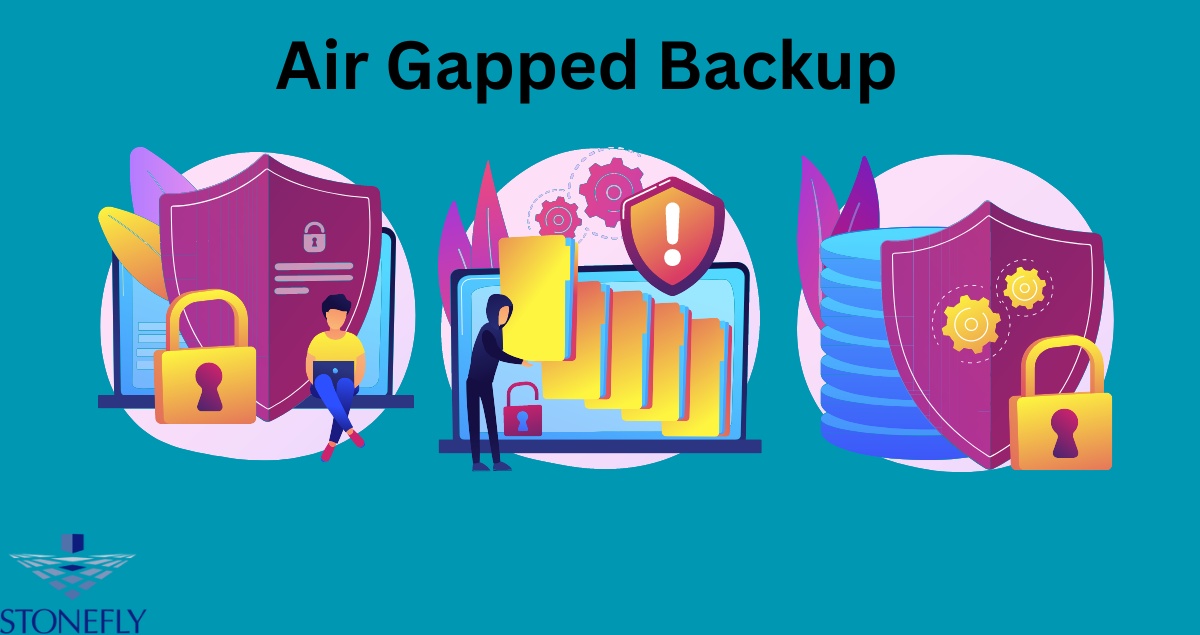Air Gapped Backup: An Overview
Air gapped backup is a method of backing up data that removes it from a network or internet-connected device. This approach creates an additional layer of security by physically isolating the backup data, making it less vulnerable to cyber attacks and unauthorized access.
What is Air Gapped Backup?
Air Gapped backup involves storing data on a separate, offline device that is not directly connected to the network or internet. This can be an external hard drive, USB drive, tape drive, or even paper copies. The key idea is that the data is physically disconnected from any online system in order to prevent malicious actors from accessing or manipulating it.
Why Use Air Gapped Backup?
Air gapped backup is typically used as an extra security measure for important or sensitive data. It can protect against cyber threats such as ransomware, malware, and hacking attempts that target network-connected devices. In the event of a cyber attack, having an air gapped backup can provide a way to recover critical data without compromising its integrity.
Implementing Air Gapped Backup
Step 1: Identify critical data
The first step in implementing air gapped backup is to identify the data that needs to be protected. This could include confidential information, financial records, or anything else that would have serious consequences if it were lost or compromised.
Step 2: Choose an offline storage device
Next, select an offline storage device to use for the backup. This could be a physical device like an external hard drive or a cloud-based service that allows for offline access.
Step 3: Create and transfer backups
Once the storage device is chosen, create backups of the critical data and transfer it to the offline device. It's important to regularly update these backups to ensure they contain the most current versions of the data.
Step 4: Test and verify backups
It's crucial to regularly test and verify the backups to ensure they are functioning properly. This can involve restoring a small portion of the data from the offline device to ensure it is accurate and usable.
Advantages of Air Gapped Backup
Increased security:
Air gapped backup provides an extra layer of security by physically isolating critical data from online systems.
Protection against cyber attacks:
By removing the backup data from network-connected devices, air gapped Backup can protect against cyber threats such as ransomware, malware, and hacking attempts.
Reliable offline access:
Even if there is a disruption in internet or network connectivity, the data can still be accessed from the offline storage device.
Cost-effective:
Air gapped backup can be a cost-effective solution for small businesses or individuals who may not have the resources for more advanced security measures.
Redundancy:
Having an air gapped backup provides redundancy in case of hardware failures or other disasters that could result in data loss.
Compliance with regulations:
Some industries, such as healthcare and finance, have strict regulations on data protection. Air gapped backup can help ensure compliance with these regulations.
Mitigation of human error:
Human error, such as accidental deletion or overwriting of data, is a common cause of data loss. Having an air gapped backup can mitigate the impact of these errors.
Protection against natural disasters:
In the event of a natural disaster, an air gapped backup can provide a way to recover critical data without relying on internet or network connectivity.
Data recovery options:
Having an offline backup provides the option for data recovery in case of cyber attacks, data corruption, or other disasters that may render online backups inaccessible.
Flexibility:
Air gapped backup allows for flexibility in terms of storage options. Backup data can be stored on a variety of offline devices or even in physical form.
Privacy:
Sensitive data can be better protected with air gapped backup as it is physically disconnected from the internet and less susceptible to unauthorized access or surveillance.
Long-term storage:
Air gapped backup can provide a more reliable option for long-term storage of critical data compared to online backups, which may be subject to hardware failures or other issues over time.
Types of Air Gapped Backup
There are various types of air gapped backup methods, depending on the type of data being backed up and the preferred storage medium. Some common types include:
Offline hard drive backup:
This involves storing backups on an external hard drive that is kept disconnected from a network or internet-connected device.
USB/solid-state drive (SSD) backup:
Similar to the offline hard drive backup, this method involves storing backups on a USB or SSD that is kept disconnected from any online systems.
Tape backup:
Tape drives can be used for air gapped backup, with the tapes themselves being stored in a secure location away from network-connected devices.
Paper copies:
For added security and privacy, some organizations may choose to print out important data and store it in a secure physical location as an air gapped backup.
Conclusion
Air gapped backup is a valuable security measure for protecting critical or sensitive data from cyber attacks and other threats. By physically isolating the backup data, it creates an additional layer of protection and provides peace of mind that important information can be recovered in case of any disasters or emergencies. With the numerous types of air gapped backup available, it's important to assess the specific needs and risks of your data before implementing a backup strategy. So, it is highly recommended to consider using air gapped backup as part of an overall data protection plan for added security and peace of mind. Protecting critical data should always be a top priority in today's digital world, and air gapped backup can be a key component in achieving this goal. So, take the time to identify the data that needs protecting, choose an appropriate offline storage device, regularly test and verify backups, and enjoy the many advantages of having an air gapped backup system in place.
FAQs
Q: Can I use air gapped backup for all types of data?
A: Yes, air gapped backup can be used for any type of data that you want to protect from cyber attacks or other threats. It is especially useful for critical or sensitive information.
Q: How often should I update my backups?
A: It's best practice to regularly update your backups, at least once a week, to ensure they contain the most current versions of your data.
Q: Can I store my backups in different locations?
A: Yes, it's recommended to have multiple copies of your backups and store them in different physical locations for added redundancy.
Q: Is air gapped backup only for businesses or can individuals use it too?
A: Air gapped backup can be used by both businesses and individuals. It is a cost-effective solution for anyone looking to protect their data from cyber threats or disasters.
Q: Does air gapped backup eliminate the need for other security measures?
A: No, air gapped backup should be used in conjunction with other security measures such as firewalls and antivirus software to provide comprehensive protection for your data. However, it does add an extra layer of security to your overall data protection plan.


No comments yet